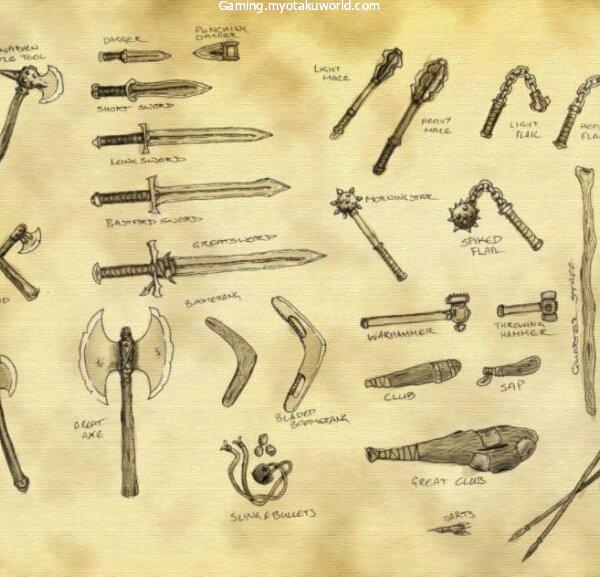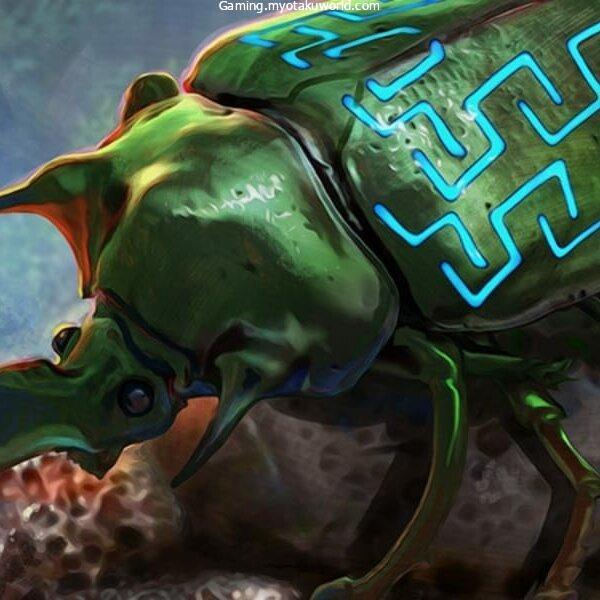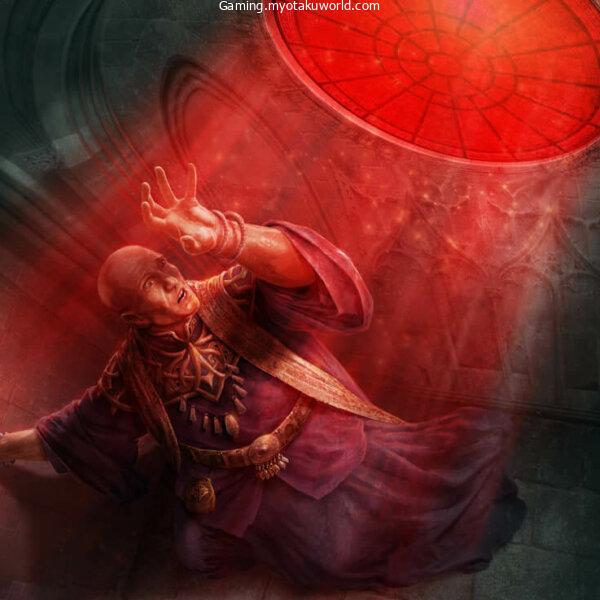Choose up to five creatures in the area that are falling. The rate at which a falling creature falls slows to 60 feet per round until the spell ends.
If the creature lands before the spell ends, it won’t take any damage from falling and will be able to land on its feet.
The spell will also end for that creature.
Things or creatures that are affected fall slowly. Feather fall instantly slows the rate at which the targets fall to just 60 feet per round, which is the same as the end of a fall of a few feet.
While the spell is in effect, the targets don’t take any damage when they land. When the spell’s time is up, the rate of falling goes back to normal.
The spell affects one or more Medium-sized or smaller creatures or objects, or the equivalent in larger creatures: a Large creature or object counts as two Medium-sized or smaller creatures or objects, a Huge creature or object counts as four Medium-sized or smaller creatures or objects, and so on.
This spell doesn’t do anything special to ranged weapons unless they fall a long way. If the spell is cast on an object that is falling, the object does half the normal damage based on its weight, and the height of the drop doesn’t make a difference.
Feather fall only works on things that are already falling. It has no effect on a sword blow, a creature charging, or a creature in the air.
Feather Fall 5e
Casting Time: 1 reaction, which you take when you or a creature within 60 feet of you falls
Range: 60 feet
Components: V, M (a small feather or piece of down)
Duration: 1 minute
School: 1st-level transmutation
Player’s Handbook, pg. 239
Feather Fall is the “Oh, sh*t, we’re falling to our deaths” spell that players almost never get to use, unless it saves the whole group from dying.
Players have a lot of questions and misconceptions about how Feather Fall works, even though it basically just says “fall slower.”
We’ll also talk about how the spell can be used in more ways than you might think at first glance.
Who Can Cast Feather Fall In 5e?
Feather Fall is on the spell list of the following classes:
The following classes have Feather Fall on their spell list:
Feather Fall is not free for any subclasses.
What Does Feather Fall Do In 5e?

Feather Fall slows the falling speed of up to five falling creatures within 60 feet to 60 feet per round. This happens right away. It also makes sure that creatures who fall don’t get hurt and land on their feet instead of on the ground.
Feather Fall can only be used when a creature within 60 feet of the caster starts to fall. It can’t be cast ahead of time to affect creatures that haven’t started to fall yet.
How far can you go when you use Feather Fall? With Feather Fall, you can fall for up to 600 feet. One round of battle lasts 6 seconds, and during that time, a player who is affected falls 60 feet (10 feet per second). Since Feather Fall lasts one minute, this adds up to 600 feet.
We’ll leave the question of whether players can wait until the end of a 600-foot fall to use Feather Fall until the rules section.
What Are The Rules For Feather Fall In 5e?
Feather Fall has the following rules in DnD 5e:
- Feather Fall can always be used as a reaction when falling, no matter what Xanathar says about how fast you fall. So don’t worry that you have to fall 500 feet per round (83.3 feet per second) before you can slow down to 10 feet per second. Sage Advice says that the rules for Feather Fall are more important than the general rules for “Rate of Falling” (XGtE 77).
- Even if you cast a spell on your turn, you can still use Feather Fall as a reaction in the same round. Because actions and results are not the same thing. Here’s what Sage Advice says about this particular situation.
- Obviously, you won’t be able to cast Feather Fall if you’ve already used your reaction (to cast Shield, make an opportunity attack, etc.).
- You can’t use Feather Fall before it’s your turn. The way the rules are written, Feather Fall can only be used on creatures that are falling and only when a creature is falling. You can’t cast Feather Fall on yourself and your group and then all jump off a ledge at the same time; you have to jump first.
- “Falling” means what you would expect it to mean in English. To fall means to move down from a higher level to a lower level quickly and without any control.
- So Feather Fall can hit a creature that has been thrown, tossed, tripped, or is feeling the effects of gravity. Don’t let your DM tell you that you’re not really falling if a Giant throws you.
- Feather Fall lets you choose enemies to attack. The spell’s description doesn’t say anything about “willing” targets, so it can be used on any falling creature in range, even enemies who would rather not fall slowly.
- Feather Fall is good for small drops. Going back to the definition of “fall,” keep in mind that even small slips count as falls, like losing your balance on ball bearings. This can keep a friend from going down.
- Keep in mind that most DMs won’t apply this to things like shoves or abilities that are like shoves and make a creature fall down. When a force other than gravity, like a barbarian’s shoulder, comes into the picture, it’s no longer “falling.”
- When a creature lands, Feather Fall ends. So you can’t use it to land more than one time. For example, you would have to cast Feather Fall again if you used it to jump down 250 feet and then tried to jump down another 250 feet.
- Feather Fall can be used to stop damage from falling down stairs, onto ball bearings, etc. All of these examples fit the definition of the word “fall.”
- But keep in mind that Feather Fall only stops one fall from hurting you per casting, and it ends when you land on your feet thanks to the spell.
- It’s not clear if you can use Feather Fall at any time during a fall or only at the start. So, the spell’s casting time says that Feather Fall can only be cast when a creature “falls.” Our definition doesn’t help us as much here.
- Any creature that is falling can be a target, but it’s up to your DM to decide exactly when this spell can be used. Note that if a DM says Feather Fall can only be used at the exact moment a fall starts, it loses a lot of its usefulness and can only be used for falls of 600 feet or less.
- It’s not clear what will happen if you grab onto a creature with Feather Fall on it. The spell doesn’t say anything about carry weight, but it does say that it only works on up to 5 creatures. Your DM will decide what to do.
How Do I Use Feather Fall In 5e?
The main way to use Feather Fall is pretty clear, but here are some other ideas for your next session:
- Use the Ready action as a group to get ready to jump in battle. As written, the only way for a group to use Feather Fall to jump out of combat is to use the Ready action to get ready to jump when the person casting Feather Fall jumps and casts it.
- Otherwise, you’ll need to cast the spell more than once because A) people will jump before the caster and be out of range by the time the caster jumps, B) the caster will cast it too early because they’ve jumped but their allies haven’t, or C) the caster will jump first but not cast it, and then their allies will be out of range by the time they jump.
- If you have the Fly spell, pick it up. Having the Fly spell is great for a lot of things, but it’s also a big risk because you have to concentrate on it. A well-placed projectile can bring down a flying creature at any time.
- As long as Feather Fall is ready, this won’t be a total disaster.
- Prevent trap damage. Feather Fall is great for pit traps and other similar things where the damage comes from spikes at the bottom or the fall itself. You can climb out of the pit without getting hurt if you cast Feather Fall quickly. You don’t even need to make a saving throw.
- Stop your friend from going down. Feather Fall’s less obvious use is to stop a small slip or fall from putting a creature on its back. You can make anyone, including yourself, look like they can handle a floor full of ball bearings with ease.
- Note that Feather Fall stops working on a creature after it “lands” once, so you can’t keep doing this with a single spell.
- Bring it to the top. This tip is pretty simple: bring Feather Fall with you if you know you’ll be doing a lot of airborne, cliffside, deep cave, etc. exploration where big falls are a big deal. Using a spell slot to stop random deaths is a great idea.
Who Can I Target With Feather Fall 5e?
Feather Fall lets you target any creature that is falling at the moment. The text of the spell doesn’t make it clear if a creature needs to have just fallen or if it can be a target after falling for a few seconds. Ultimately, it’s up to the DM to decide.
Is Feather Fall 5e A Good Spell?
Feather Fall is a good spell, and depending on your campaign setting and your DM, it could be a great spell. Falling can do a lot of damage—1d6 of bludgeoning damage for every 10 feet, up to a maximum of 20d6—but it can also be very dangerous (PHB 183).
Having a spell in your pocket that protects you and up to five other people in your party can save your life. Not to mention that Feather Fall is still useful even if you don’t climb high very often because of small slips and falls and the occasional pit trap.
On the other hand, some DMs don’t take into account falls and other environmental effects very often in their games. Feather Fall might seem pointless in these situations.
Even so, it’s one of those spells that you’ll be glad to have, even if you only use it once per campaign, if you have the resources to buy it and keep it ready.
Aside from that, we think players should be able to coordinately jump off a cliff during a fight. Don’t make them follow the strict RAW version of events, where they all Ready their actions to jump and wait for the caster to jump.
This kind of mechanic slows down the game and doesn’t add to the story. If someone in the group knows they want to jump and cast Feather Fall, let that happen when it’s their turn.
FAQs
Can players cast Feather Fall at any point in a fall?
Yes, I think players should be able to use Feather Fall at any time during a fall. Don’t limit it to the exact moment a fall starts, even though that seems to be what the spell’s casting time says.
In the end, giving players more chances to use Feather Fall is never a bad thing, and letting it be used on drops of more than 600 feet makes it much more useful.
Can non-targeted creatures hold onto a creature affected by Feather Fall?
No, because the spell says right there that it can only affect up to five creatures. The spirit of the spell says that it can’t do twice as much by just piggybacking on something else.
But if you have 6 or more people in your party, this can feel like a small problem with the spell. In this situation, I think Feather Fall should be able to be upcast to affect one more creature per spell slot above the first. There’s no reason not to let this happen.









